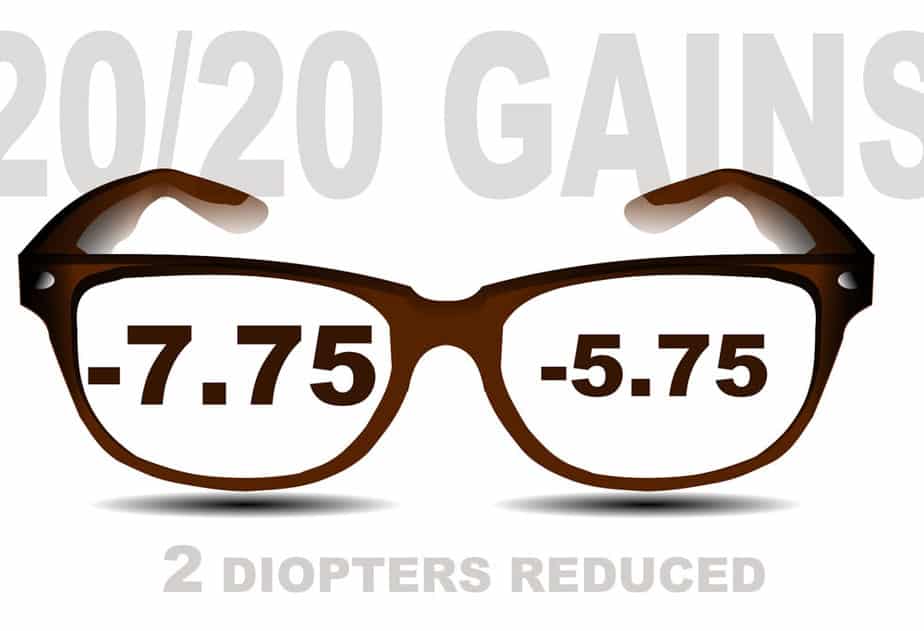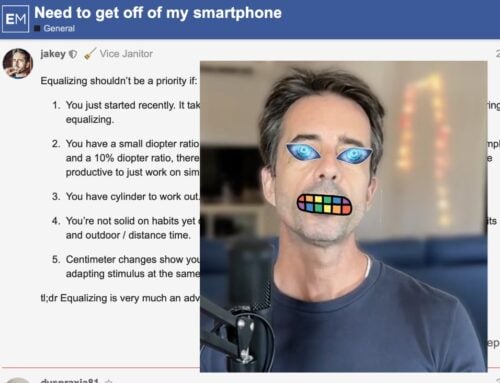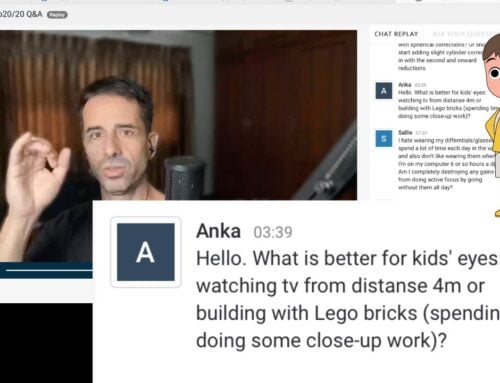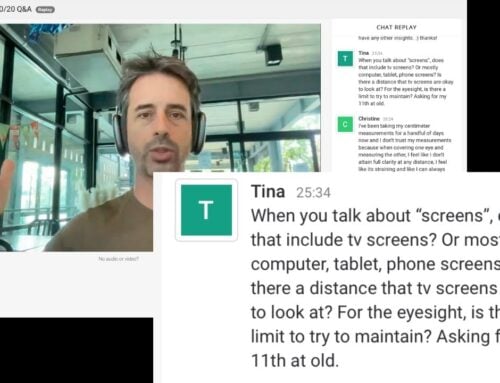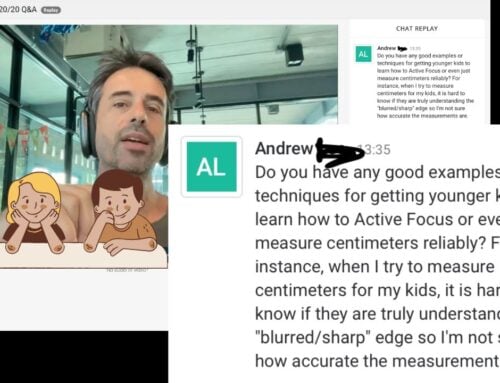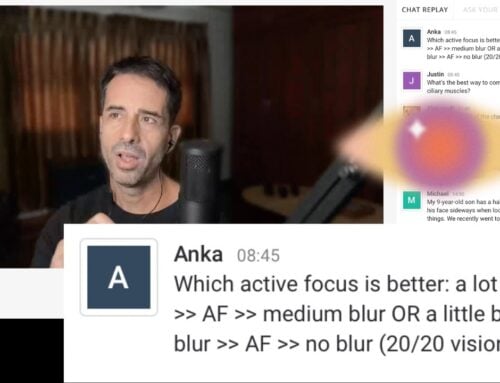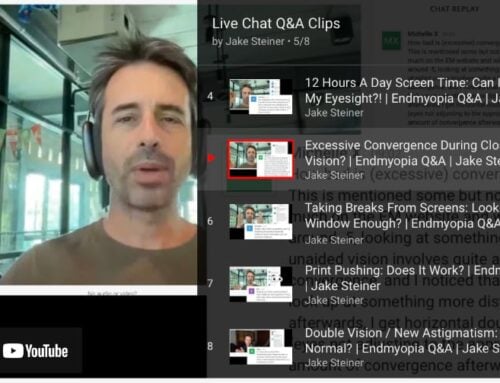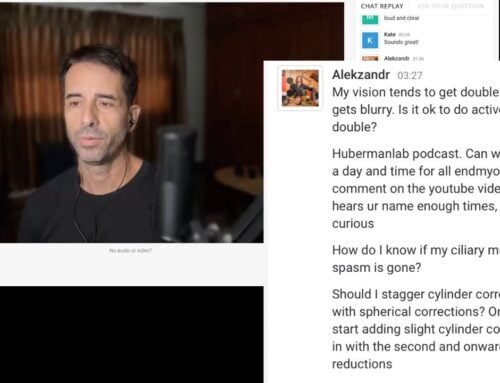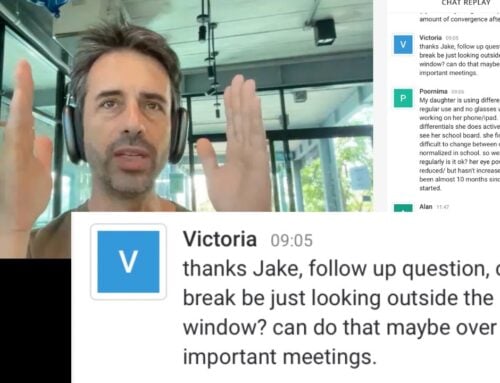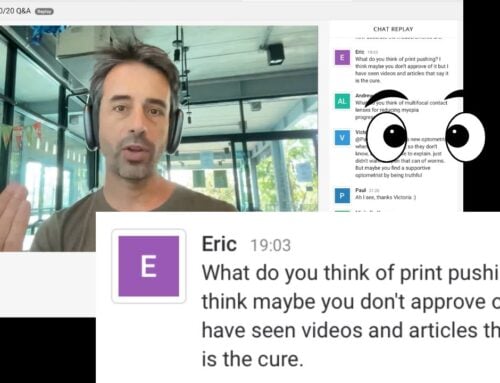Pro topic, Q&A time.
Equalizing is a topic we discuss in BackTo20/20, as part of the effort to reduce your diopter complexity as you get closer and closer to not needing to wear glasses for most activities.
Equalizing: Reducing the difference between left and right eye spherical diopters.
Diopter Complexity: The degree of difference between left and right eye spherical diopters. Amount of cylinder correction. Degree of difference between left and right eye cylinder.
The simpler your diopters, the easier the transition to being glasses-free. So while you might start with a really complex correction with high myopia, ideally by the time you’re at low myopia you’ll have no diopter complexity. (example: L:-1.50 R:-1.50)
This is something you don’t want to mess with at all when you’re first starting out. Beginning is all about developing the right habits, and making focal plane changes that don’t affect diopter complexity at all.
Don’t start out with monkeying with lenses, like a Jake always says.
How Do You Start Equalizing?
Remember, this is pro topic stuff.
Here’s a golden nugget of a tip for you, if you’re far enough into the process to warrant equalizing, and are wondering if/when/what/how much to change.
Let’s look at Tim’s question in the BackTo20/20 support forum:
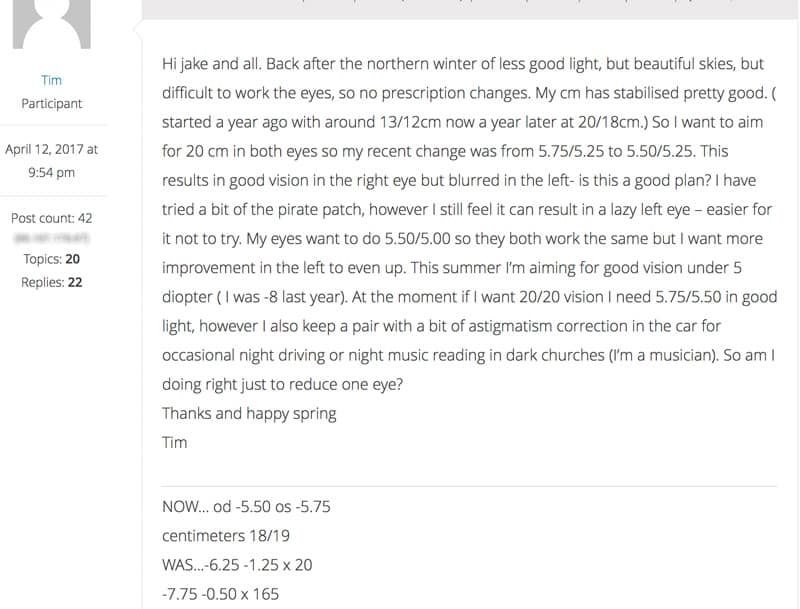
Note the great progress, too.
Great level of detail. You want all the data in place before making changes.
Here’s what I tell Tim in the forum:
Tim,
The best way to tell is based on your centimeter changes on previous reductions. If the left eye is always a bit slower to focus, maybe off by a bit on the centimeter, then it’s best to stick with maintaining the diopter ratio for reductions. It’s generally the easiest way to make good progress and tends to also create the least plateaus.
On the other hand, if there’s no noticeable difference between left and right eye as you do unchanged diopter ratio reductions, and you have done a few, and the diopter ratio is bothering you – then by all means, add that challenge to the next reduction.
It’s a small enough percentage at your current diopter degree to where you will definitely adapt to it. There’s just no certain way of knowing the time period or how much of a challenge it can be – though above suggestion tends to be a good predictor. Also having already reduced from -8 to -5, might as well get into a bit of equalizing (plus, it’s spring – always a good time for new challenges).
Keep me posted on how it goes with the reduction!
Make sense?
Like I always, always say, when you’re asking diopter specific questions, you’re probably not ready for the answers just yet. Understanding the underlying premise of why the diopter, not what the diopter, is key to becoming your own eye guru and getting back to 20/20.
Your Eyes Are Always Telling You What They Need.
In this case, looking at how previous diopter changes affected the trajectory of your vision changes is quite helpful to make the next diopter choice.
Your eyes are always giving you all the feedback you need to make the right subsequent change. This is why silly Jake keeps going on and on about keeping a log and paying attention and learning as much as possible about myopia, as you can. Sure, you can make all this work without the nuance that we have here. There are all sorts of Internet destinations copying the “lite” version of our glorious wisdoms. But is it worth confusing your visual cortex, dealing with excess blur, and generally not having all the possible fun while also making all the 20/20 gains? ;)
Cheers,
-Jake

